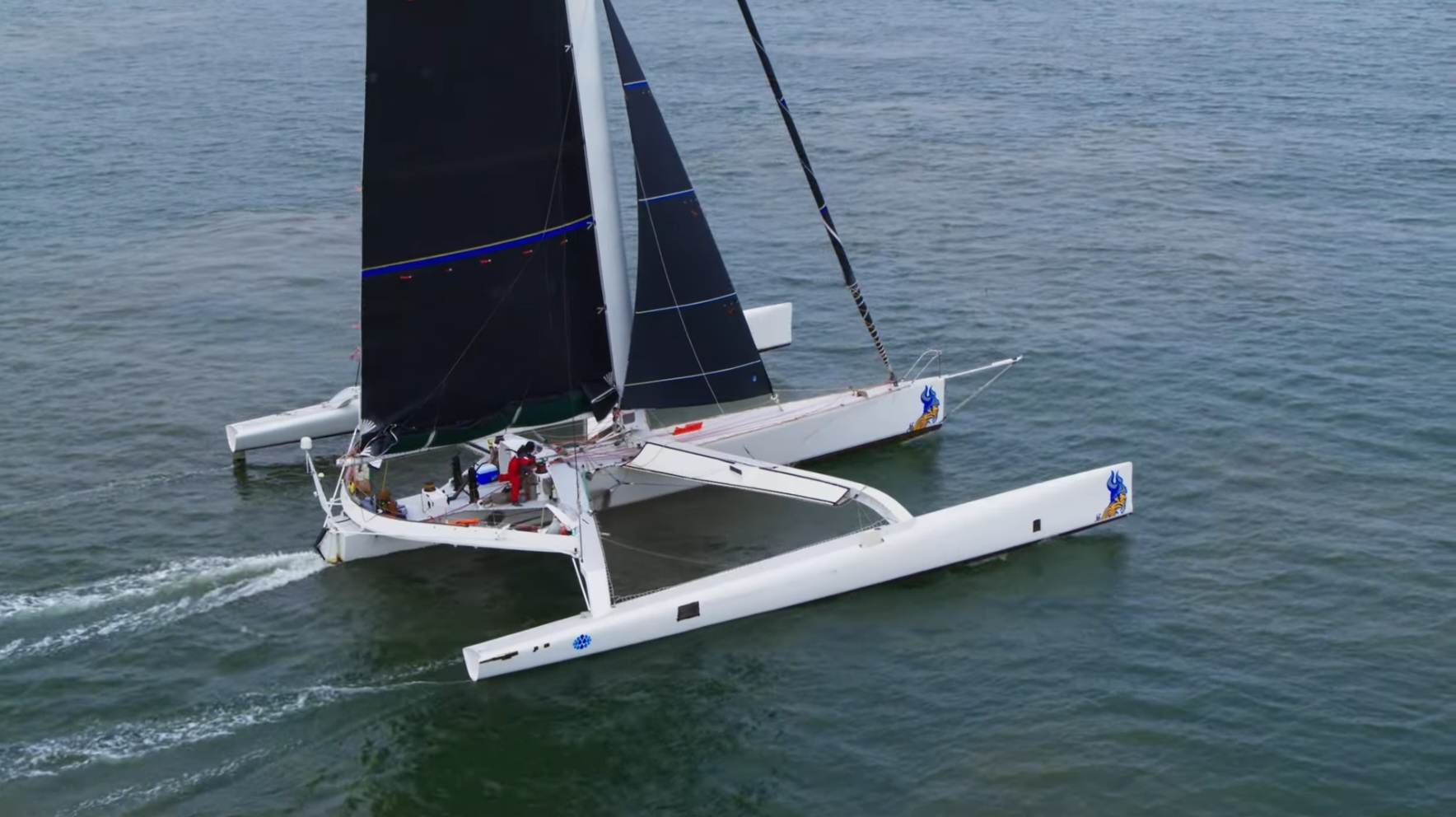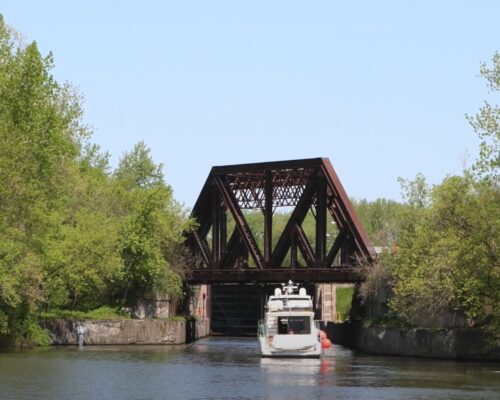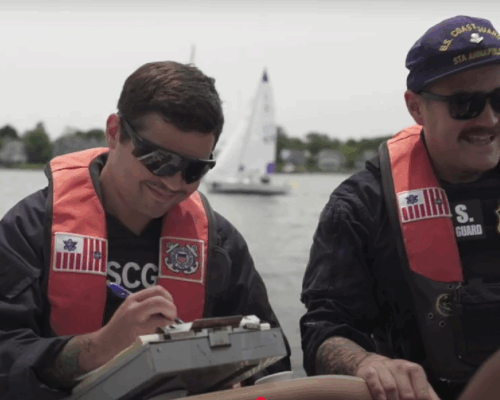As far as single-handed sailing records go, just shoving off the dock can be the biggest hurdle. The time and effort spent planning, preparing, and provisioning can take the wind out of even the strongest sailors, no pun intended. For Baltimore native Captain Donald Lawson, whose ORMA 60 trimaran Defiant is in the final stages of starting her record attempt, an offshore collision with debris in January of this year threatened to stall the Dark Seas Project indefinitely.
“Hitting debris in the water is not the worst thing that’s happened to me on the ocean,” he says with a chuckle, sitting in his booth on a rainy day at the Annapolis Spring Sailboat Show. Water puddles at his feet and gusts shake the row of tents where he’s set up shop. A little weather clearly does not disturb him. “I’ve lost power, been dismasted, ripped sails, and even had man overboard experiences. I’ve been through it all. Hitting trash happens.”

At the time of the collision, Lawson and his wife were en route from San Diego toward the Panama Canal and 1,000 nautical miles from shore. Defiant lost power and the couple was forced to sail the last 2,800 miles using a compass. Through it all, Lawson never doubted their ability to arrive in port safely.
“We knew that we had a fast boat, we had food, and we had a strong crew,” he says. “We knew we were going to make it.”
Lawson’s perseverance is a hallmark of his operational strategy, and one he learned at a very young age. “My father worked for NASA, and coached five or six sports teams throughout,” says Lawson. “My brothers and sisters were All-American athletes. I was the only one who didn’t play sports; sailing was my thing. I laugh now because I’m the only one who’s still a professional athlete.”
With Defiant still being serviced in Mexico, Lawson is itchy to get her back to Baltimore. “It’s nerve-wracking,” he says, mentioning his multiple webcams and regular check-ins with servicemen. Instead of sweating it, however, he’s using the time to have a mini refit performed. The engine is serviced, and a new wind generator, radar, and autopilot are being installed. Toward the end of May he’ll board her and begin the passage through the Panama Canal, up the Eastern Seaboard, coming into the Port of Baltimore in mid-June.
Once in Baltimore, Lawson will be able to tend to Defiant’s needs himself on a daily basis, going on standby in October when the records season officially opens. Ideally, he’ll start his attempt in December or January.
“To be successful at this type of sport, you have to be very driven,” he says. “If you’re out there thinking to yourself, ‘I don’t know’, you aren’t going to make it. To make long-distance passages single-handed, you have to put yourself in the mindset that whatever happens between now and then, I’m going to get there.”
The “there” that Lawson is eyeing is a 74-day world record for his size boat. To achieve that, Defiant will have to average between 18 and 20 knots, 24 hours a day. He’ll push Defiant through some of the most dangerous weather patterns to maintain that speed.
“Climate change is elongating weather patterns and systems,” he says, explaining his strategy. “Part of it is waiting until the right time of the year, when you can surf through an entire system rather than trying to hop big globs.”
While Lawson will be pushing Defiant to her max (he lovingly refers to this as her “sweet spot”), he’ll also be testing the limits of human determination.
“My biggest fear is failure,” he says. “And I measure failure by not trying, or quitting. As long as I’m out there trying, I don’t have to get everything I want,” he adds, referring to the record.
Lawson says that the only person who could stop him from achieving that goal is himself. “I’m my biggest critic, and my most important foe,” he says. “When I’m out there sailing, I’m only competing against myself. No one else can stop me, but no one else can help me, either.”
A gust of wind hits the row of tents at the show and a wall of rain seems to move horizontally off the harbor and into the booths. In the distance, a siren wails and showgoers begin to talk of weather warnings. As others take cover, Lawson’s calm holds. He shifts the brim of his baseball cap and casts a protective glance to his wife, who is likewise undisturbed.
“If I’m going to get this done, I need to do whatever it takes,” he says.




